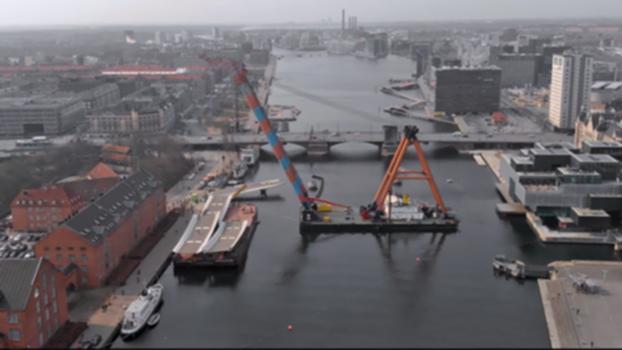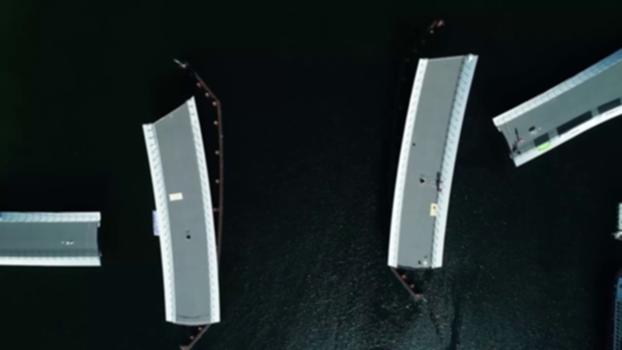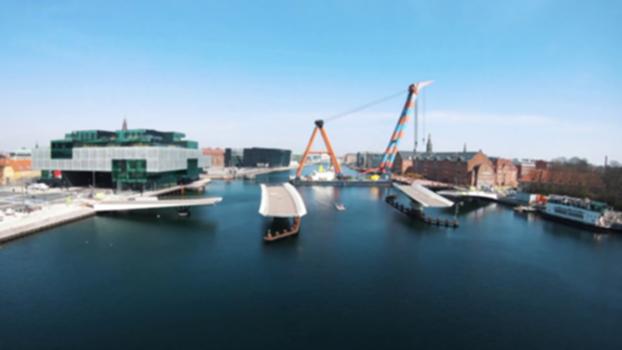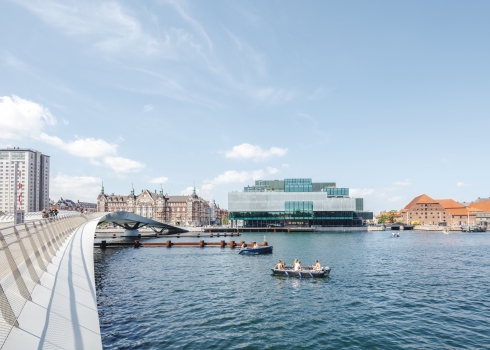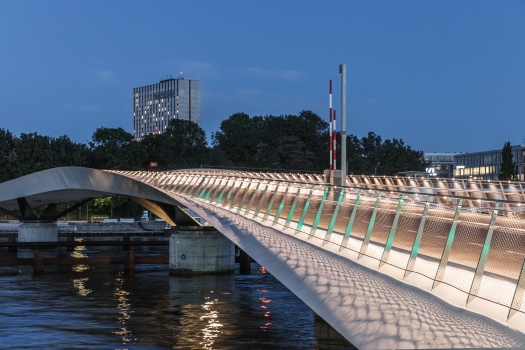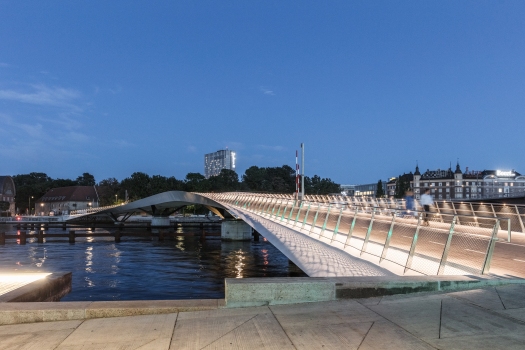General Information
| Completion: | 14 August 2019 |
|---|---|
| Status: | in use |
Project Type
| Structure: |
Swing bridge Girder bridge |
|---|---|
| Function / usage: |
Bicycle and pedestrian bridge |
| Material: |
Steel bridge |
| Plan view: |
Structurae Plus/Pro - Subscribe Now! |
Awards and Distinctions
| 2022 |
shortlisted
for registered users award winner for registered users |
|---|
Location
| Location: |
Copenhagen, Hovedstaden, Denmark |
|---|---|
| Near: |
Langebro (1954)
|
| Coordinates: | 55° 40' 15.58" N 12° 34' 47.75" E |
Technical Information
Dimensions
| total length | 175 m | |
| deck | deck width | min. 7 m |
Materials
| superstructure |
steel
|
|---|---|
| piers |
steel
|
| abutments |
reinforced concrete
|
New Cycle Bridge in Copenhagen
Enhancing Copenhagen’s waterfront and its reputation as the world’s best city for cycling, the elegant Lille Langebro for pedestrians and cyclists was completed in August 2019. The design by the international architecture practice WilkinsonEyre in cooperation with engineers Buro Happold, the 160m opening bridge across Copenhagen’s Inner Harbour had won the competition for Danish client Realdania By & Byg.
Now gifted to the municipality of Copenhagen, the bridge crosses the city harbour next to the new BLOX building which, among other things, is home to the Danish Architecture Center, cafés, a playground and new public spaces, all of which bring life to a part of Copenhagen Habour that has been deserted for decades. It seamlessly connects the vista down Vester Voldgade from the City Hall to the harbor and on to Christianshavn on the Langebrogade quaysides.
Three key ideas characterize the concept and identity. Firstly, the bridge follows an elegant curve in plan which aligns with and evokes the great arc of ramparts and moat of Christianshavn, otherwise not apparent when viewed from the city. Secondly, the structure is arranged as two wings on the sides of the bridge defining a very acute edge, dividing light from shade. This edge dips below the decks at the abutments and soars up above the deck at midspan creating a further elegant line. Thirdly, and unexpectedly, the graceful curved profile of the bridge only becomes broken when the two swinging sections open for marine traffic.
At midspan the structure is higher than at the quaysides to allow for the required 5.4m navigation clearance for boats while the bridge is closed. Together with the curved alignment and raised 'wings' this has the effect of a gradual reveal of what is ahead for those crossing.
The opening mechanisms of the swing spans are discretely concealed in the piers and opening structure allowing the flowing line of the bridge to run uninterrupted from end-to-end. Split into five spans, with two 28m parts either side of the 48m main section, Lille Langebro has a minimum clear width of 7m, offering a generous 3m wide zone for pedestrians and a 4m wide zone which has been subdivided into two lanes for cyclists.
The primary steelwork is painted in a uniform off-white, drawing attention to its curved form and the changing play of light and shadow on the water. In contrast, the pier arms and support structure are painted in a dark grey to minimize the visual impact on the river, further enhancing the principal curved line of the bridge across the water. Other materials were selected for their robust nature and suitability for the harsh environment. The parapet is fabricated from brushed stainless steel, with a lightweight stainless-steel mesh infill to allow for greater functionality.
The handrails incorporate lighting. Functional lights angle inwards towards the deck guiding users along the path. Architectural lighting is displayed outwards, illuminating the upper surfaces of the two structural wings, creating a ribbon of light from quayside to quayside.
Participants
Relevant Web Sites
Relevant Publications
- (2021): Design and Construction of the Lille Langebro, Copenhagen. In: ce/papers, v. 4, n. 2-4 (September 2021), pp. 2382-2386.
- (2022): Lessons Learnt from the Structural Design and Construction of the Lille Langebro, Copenhagen. Presented at: Footbridge 2022: Creating Experience, Madrid, Spain, 07-09 September 2022.
- (2022): Mechanical Innovations Developed for the Lille Langebro Swing Bridge, Copenhagen. Presented at: Footbridge 2022: Creating Experience, Madrid, Spain, 07-09 September 2022.
- About this
data sheet - Structure-ID
20078152 - Published on:
15/08/2019 - Last updated on:
06/01/2022


